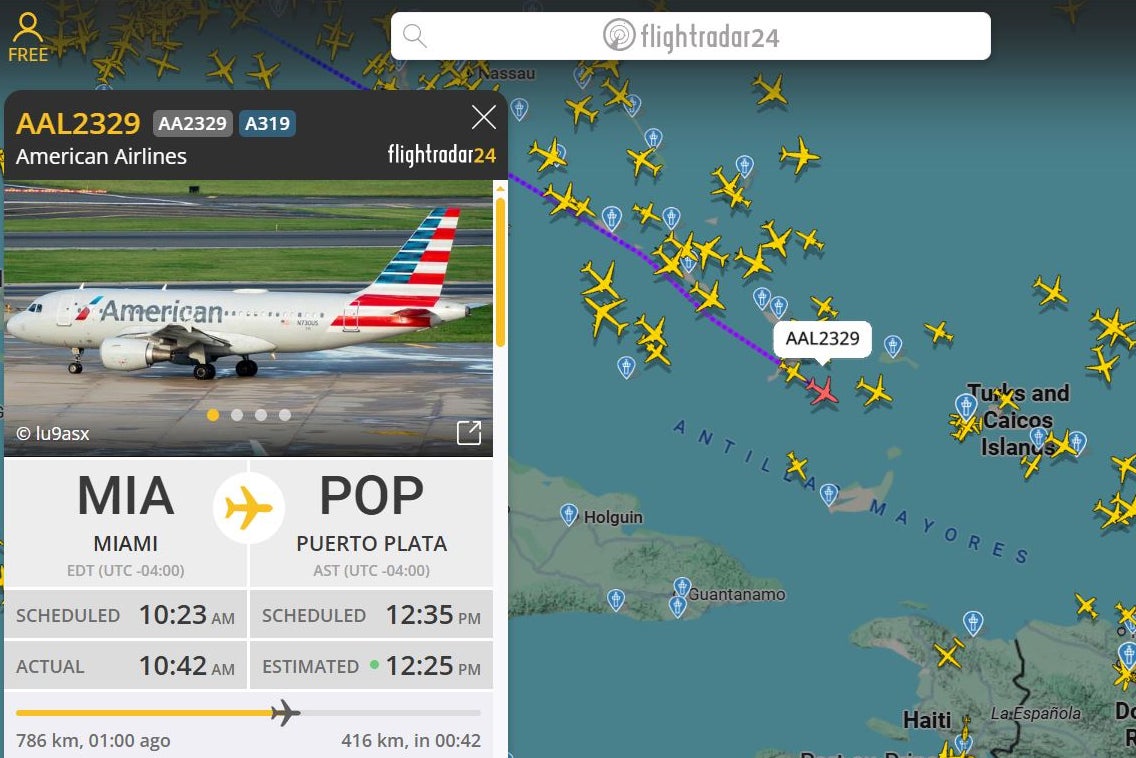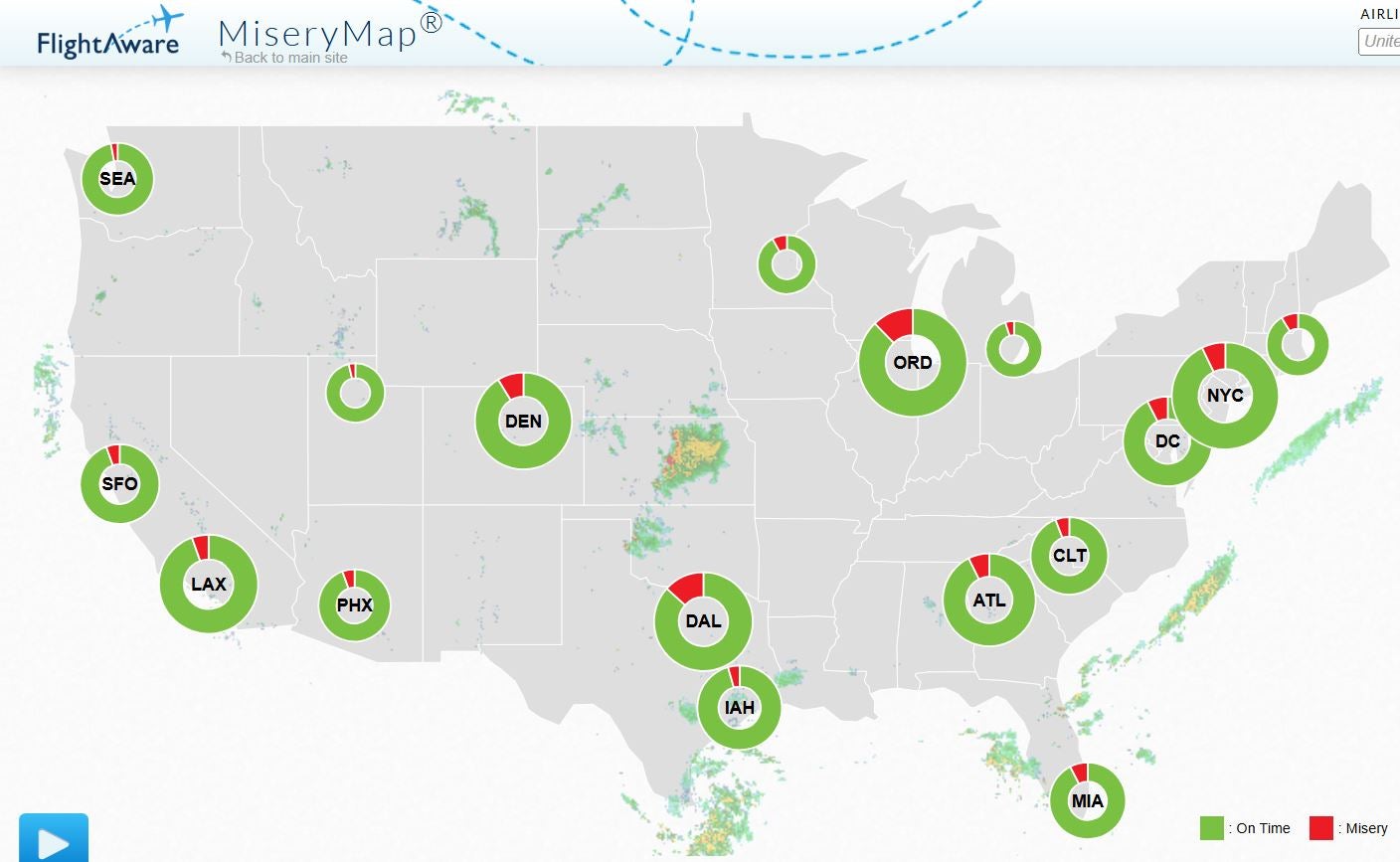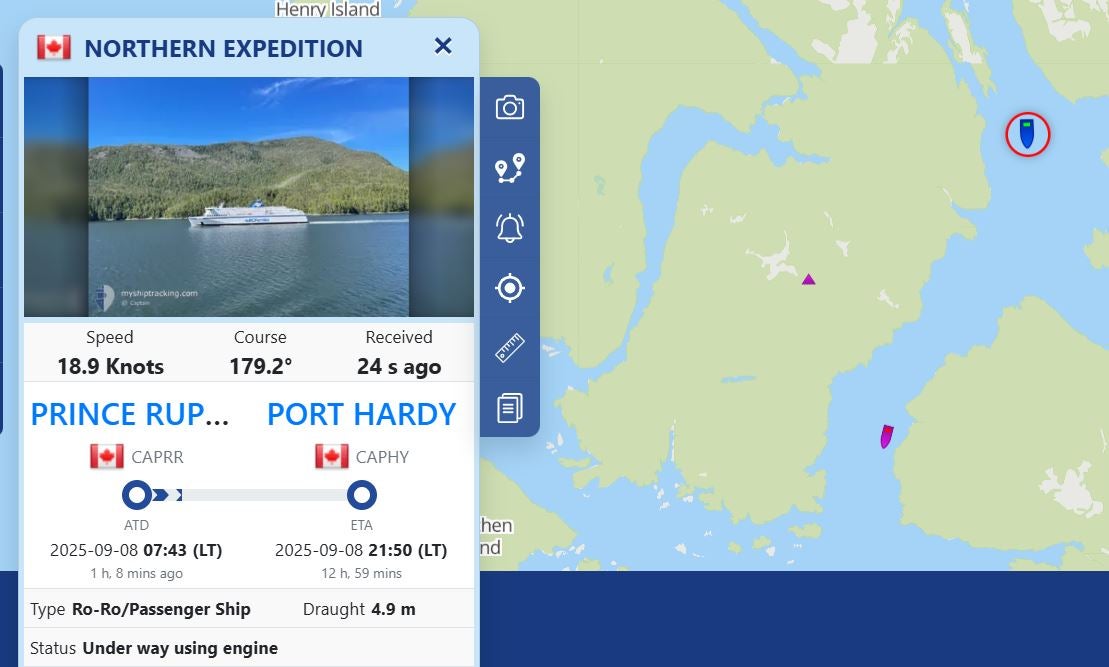.jpeg?width=1200&auto=webp&crop=3%3A2)
It’s an all-too-familiar, often soul-destroying part of a vacation — getting a gate number for a flight but discovering that the incoming aircraft hasn’t even arrived. And no one is making announcements about the inevitably late departure.
Luckily, several tools are available that reveal the whereabouts and expected arrival times of incoming planes, enabling you to anticipate delays — and potentially change your flight plans — before the airline announces them.
If the arrival time of the incoming flight is less than 45 minutes from the departure time — or you’re expecting to take off imminently from New York but can see that your plane is currently somewhere over Newfoundland — then a delay of some sort is on the cards.
Being in the picture makes the journey less frustrating and puts the power in your hands — you can immediately begin rebooking connecting flights and hotels if the delay is clearly going to be significant.

There are similar tools available for boat journeys, too, but first let’s look at the steps to take for circumventing airport rage.
Before setting off, it’s important to download the airline app if there is one, because there’s a good chance that flight status information will be available on it, especially if you’re using a major airline.
At the very least, sign up for text and email alerts.
The other option is to use a third-party flight tracker tool such as FlightAware, Flightradar24 or Flighty, which all have free-to-use core features.
Input your flight number into FlightAware and then click “Where is my plane now?” to see an array of information about your incoming flight. You’ll be shown the departure gate and time at the previous airport, its current speed if the plane is airborne and there’s even an interactive map that tracks its progress to the airport you’re waiting in.
Flightradar24 also boasts an interactive map and a flight number search option, with Flighty using “pilot-grade data” to give you delay predictions and possible disruptions from weather events.
It’s also possible to search by airline and route on these sites.


Want a general overview of delays? FlightAware has a “MiseryMap” graphic that represents the major U.S. airports as circles colored with varying percentages of green and red, the former denoting “on time” departures and the latter the “misery” of delays.
Traveling by ferry or other pleasure craft? Then turn to the likes of myshiptracking.com and vesselfinder.com for sea-going tracking data.
Find your ferry on myshiptracking.com, for example, and the site will reveal its current position and location on an interactive map, along with its subsequent ports of call and expected arrival times.

Gilbert Ott, Founder of travel site godsavethepoints.com, told The Independent: “The best thing to ensure a smooth trip or get ahead of the herd when things go wrong is to use these proactive flight monitoring tools.
“I religiously check to ensure my aircraft has departed wherever it’s coming from. The number of times I’ve known about a delay before the airline has even acknowledged it is limitless.”
He added: “This allows things like rebooking with other airlines, staying in your hotel longer and setting expectations for the day.”
Southwest Airlines introduces new security barriers on aircraft
US airline launches new nonstop routes to UK and Europe
I tried out American Airlines’ new Dreamliner cabin — here’s why it’s a game-changer
British man forces flight into emergency landing after ‘punching’ passenger
Heathrow Airport live: Terminal reopens after evacuation and 21 treated by paramedics
Traders voice frustration at Tube strike with city economy facing hit of £230m







